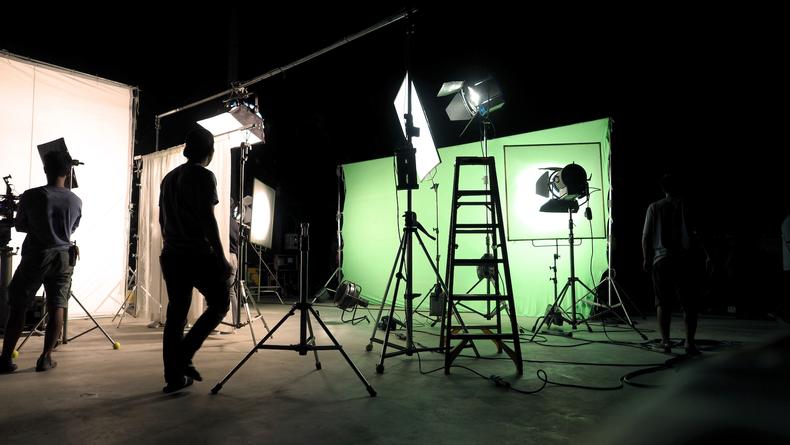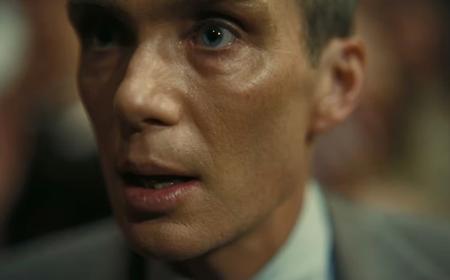
The art of film lighting is about more than just brightening up a set. The right lighting setup can evoke a certain emotion, create a connection with the audience, and illuminate the subtext of both character and scene. Here, you’ll find a guide to the different types of lighting techniques every aspiring—and working—filmmaker should know.
JUMP TO

gnepphoto/Shutterstock
Three-point lighting is a filmmaking setup that uses three lighting sources: a key light, a fill light, and a backlight. It is a standard method that lets the cinematographer illuminate the subject directly, control shadows, and create a balanced and dynamic look.
Key light
The key light is your main light source used to illuminate the subject in a scene; it is also the primary light of a three-point setup. Key lights are essential in creating mood and atmosphere and can emphasize the subject’s features and emotions. Position the key light to one side of the subject, angled toward their face, to create depth and shadows, as in the interrogation scene from “The Dark Knight.”
Fill light
A fill light does not lessen or add to the main lighting look of the scene, rather it lightens shadows created by the key light. Using a fill light in tandem with a key light allows for a more natural and balanced look, softens harsh shadows, and adds depth and dimension to the subject. Position the fill light opposite the key light.
In the courtroom scenes of “A Few Good Men,” the key light is positioned above the cast while a fill light is placed directly in front of them to control the amount of shadow on their faces.
Backlight
The backlight is placed behind the subject, creating a layer between them and the background and therefore adding even more depth to the image. You can get a strong sense of the backlighting on Michelle Williams in this clip from “Shutter Island.”

“Her” Courtesy Warner Bros. Pictures
Soft light is the use of a diffused light source to create a more even and gentle distribution of light with less-defined shadows. Soft lighting creates a warm or dreamy atmosphere, making it effective in romantic comedies and dramas. To achieve soft lighting, use a softbox, an umbrella, or a diffusion panel positioned close to the subject.
What is bounce lighting?
Bounce lighting is necessary when you want to create a soft look but your light source is too harsh or direct. In this situation, you can redirect and diffuse light using reflective surfaces such as a white wall or ceiling, a bounce card, or a reflector board. Adjust the angle and distance of your reflective surface in relation to the subject until you have the desired shadows and tone.
The soft, nearly shadow-free lighting in this scene from “Harry Potter and the Deathly Hallows: Part 2” emphasizes the otherworldly, dreamlike quality of Harry and Dumbledore’s conversation.
Hard light is a strong, direct light source with little to no diffusion that creates sharp, defined shadows. Hard lighting creates a high contrast between the dark and light parts of your image. This dramatic contrast, along with its stark shadows, is why hard lighting is particularly effective in horror and thriller films. Hard lighting is commonly achieved with a single light source—often a spotlight or Fresnel light—positioned to the side of or above the subject.
The hard lighting on Toni Collette in this scene from “Hereditary” creates harsh shadows on her character’s face, emphasizing both her grief and menace.

“Barbie” Courtesy Warner Bros. Pictures
High-key lighting involves using bright and even lighting to illuminate the entire scene. This technique ensures a low contrast—white tones dominate while black and mid-range tones are minimized. High-key lighting is often used in comedies or romantic films to create a lighthearted atmosphere largely free of shadows. To achieve high-key lighting, use soft lighting sources—such as diffused light panels, reflectors, or light bounced off walls—to achieve an even distribution of light across the scene.
An example of high-key lighting can be seen in the opening scenes of “La La Land.”
Low-key lighting uses dim, hard lighting to accentuate shadows and create a high contrast between dark and light tones. It is used in horror, film noir, or dramatic films to create tension and mystery. To achieve low-key lighting, use hard lighting sources, such as spotlights, to create deep shadows.
An example of low-key lighting can be seen in “The Godfather” when Michael Corleone (played by Al Pacino) assassinates Sollozzo and McCluskey in an Italian restaurant. As Michael prepares to carry out the killing, his victims’ faces are only partially lit or cast in deep shadow, creating a sense of mystery and tension.

“Casino Royale” Courtesy Sony Pictures Releasings
Chiaroscuro is a low-key lighting technique that emphasizes the contrast between shadows and light in the frame. Chiaroscuro—from the Italian “chiaro” (or “clear”) and “oscuro” (or “dark”)—creates a dramatic mood, adds depth to your image, and heightens mystery. The technique is often used in film noirs and horror movies to create a sense of suspense, danger, or intrigue lurking in the shadows. To achieve chiaroscuro lighting, use multiple light sources—a primary key light on one side and a fill light on the other to adjust the level of shadows.
An example of chiaroscuro lighting can be seen in this scene from “Blade Runner.” Pay attention to how actor Sean Young’s face is partially in shadow, partially illuminated.

“The Revenant” Courtesy 20th Century Fox
Natural lighting involves using the sun, moon, or any other natural sources to light a scene. Although natural lighting is primarily used for exterior shots, you can also try to have natural light coming in through a window for interiors. To alleviate the innate harshness and intensity of sunlight, it helps to use tools such as a diffuser (a semi-transparent piece of material placed in front of the subject) or a reflector to redirect the light.
An example of natural lighting can be seen in the desert scenes of “Mad Max: Fury Road.”
Golden hour is a specific type of natural lighting that involves shooting exteriors using the soft, warm light that occurs just after sunrise or just before sunset. This lighting creates a romantic or dreamy effect. To film during golden hour lighting, plan your production day carefully—despite the name, this window usually only lasts around 15 to 25 minutes.
Examples of golden hour lighting can be found throughout Chloé Zhao’s “Nomadland.”

“Empire of Light” Courtesy Searchlight Pictures
Practical lighting is the use of practical light sources—such as lamps, candles, or streetlights—as a part of the set design. Practical lighting lends a sense of realism and authenticity to a scene, but it also comes with many challenges. For example, a dimly lit candle can create a romantic and intimate mood, but you’ll have far less control over the exact ways it lights your subject than if you used a standard three-point setup. Additionally, opting to use practical lighting as your only light source runs the risk of rendering the scene too dim to pick out any details.
However, when used correctly, practical lighting creates a unique, artistic look, as in this scene from “Barry Lyndon.”



























